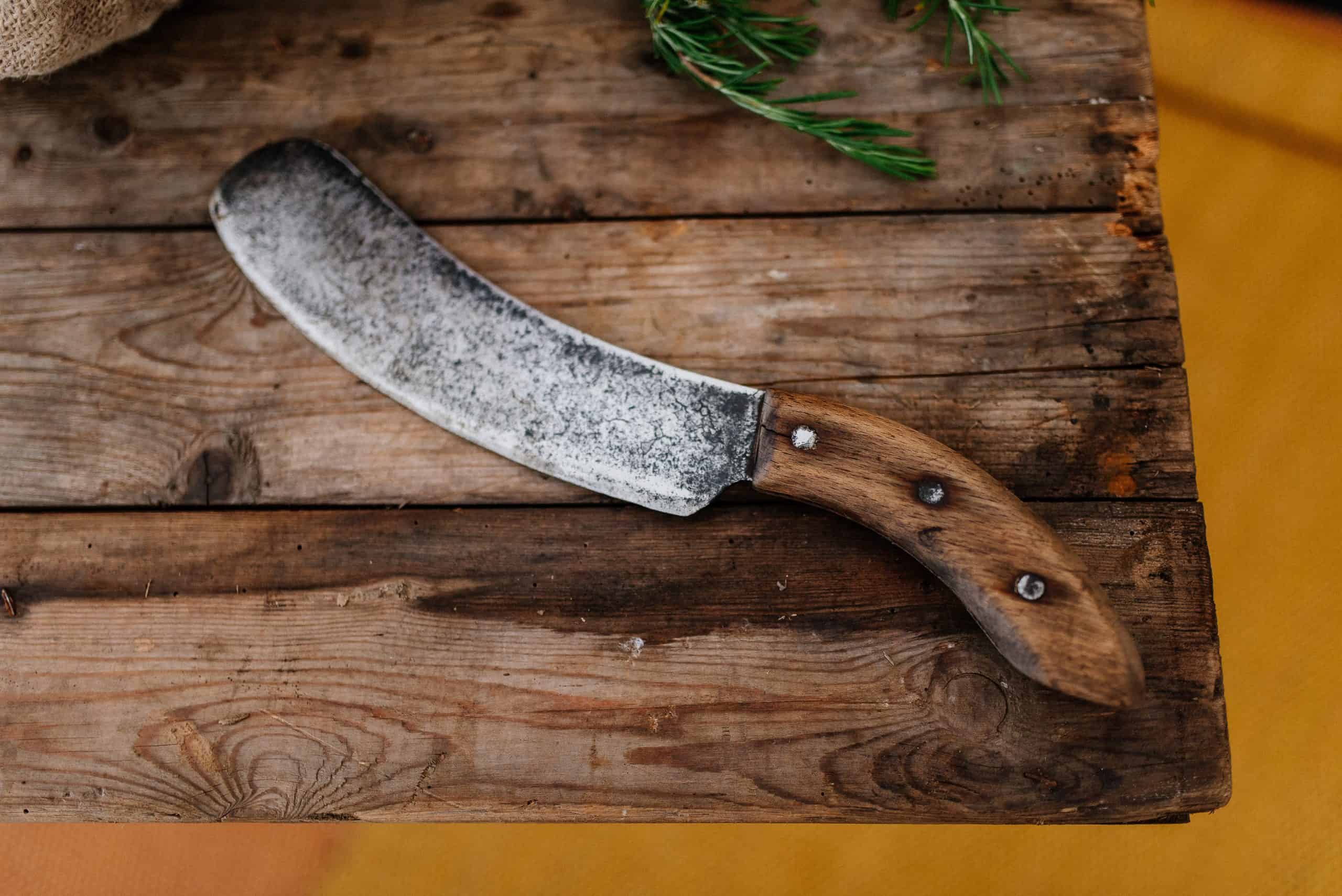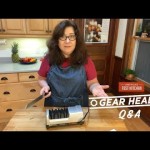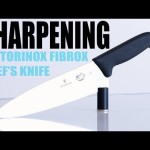
Introduction
Stropping is a process of sharpening the edges of blades and other metal tools. It is a type of grinding and honing technique that uses a leather stroke to create a uniformed edge on the desired tool or blade. The leather strop can be made from either treated vegetable-tanned, full grain leather or synthetic material, depending on the user’s preference. Some strops also contain abrasive compounds like aluminum oxide, diamond particles or chromium oxide, further decreasing the time needed for sharpening by creating a new layer of metal or rapidly abrading minute amounts of material.
Stropping is used to refine an already-sharpened edge; it leaves behind its own mark giving it better cutting capabilities. This refined edge can make even less stable metals such as carbon steel more durable under abrasive conditions because the surface will be smoother, sharper and less likely to chip or tear. It can also reduce friction between surfaces and create an ultra-fine edge for medical instruments and other tools that benefit from an extremely sharp one. If properly done, stropping will not remove newly honed metal but instead straighten microscopic impressed scratches allowing for more efficient slicing of materials due to minimal contact with surface area.
The most common application of stropping is barber’s razor sharpening. Many experienced barbers swear by combined technique using both stropping and honing as this gives them superior results when compared to only stropping alone – two different strokes that help each other deliver an exceptionally sharp blade edge suitable for close shaves without tearing facial hair. Strops are also favored in knife making as they offer precision flats relatively quickly while honing stones take longer to achieve similar results with accuracy.
Definition and Overview of the Stropping Process
Stropping is a polishing method used for honing hard, sharp blades and tools to create an extremely smooth edge. This process is performed by passing the sharpened blade over a flat strop that is either charged with abrasive compounds or coated with fine leather or canvas. As the blade rubs against the strop it will tear off any remaining burr or imperfections on its edges, allowing the blade to glide better when making cuts and creating a smoother finish. It also allows for more precise control while cutting. Often times with stropping done regularly maintenance of blades can be greatly reduced as their longevity and strength increases.
Different Strops and Hones and Their Uses
Stropping is a honing technique used to refine the sharpness of an edge, typically those of a blade. It involves using a flexible strip of leather or other material called a strop that is charged with abrasive compounds to create an ultra-fine edge on the metal surface. This technique can be used to sharpen knives, hand tools and tools made from a range of materials including steel, ceramics, etc. While it doesn’t remove much material, it can be used to polish any existing burrs as result of any corrosion or damage. Stropping should always follow sharpening and can help achieve razor sharp edges for anything from knives to planer blades.
Strops come in many different varieties depending on the type of abrasive compound they are charged with. Some strops feature compounds such as diamond paste while others feature differing grades of abrasive stones. The two most common types are bench planes which hold the strop in place while you pull them along your blade and handheld strops which function similar to sandpaper and require two hands – one hand strokes across the blade while the other holds the strop in place against it.
Another type of hones commonly found in knife-sharpening kits are pasted hones or loaded hones which cost more and have slightly slower cutting speed than their pre-charged counterparts, but will provide lasting sharpness and help refine your edge even further if need be. Pasted hones come in fine grits that cause minimal damage but are effective for honing up surfaces.
In addition, there are also ceramic rods sold for honing that serve as a medium between abrasive stones and paste loaded hones when it comes to best overall value for money spent. They offer very smooth honing action despite their coarser physical texture due to smearing from regular use over time so they provide an easier option for people new to jigging or honing blades at home.
Step-by-Step Guide to Using a Strop
Stropping is a process used to sharpen a blade or edge-tool by passing it over a surface, such as leather or canvas, with a lubricant such as honing oil. Stropping helps improve the finish and the edge of a tool.
1. Start by applying honing oil or wetting agent to your strop. The size of strop you use may differ depending on the size and type of blade being sharpened.
2. Lay the beveled side of the blade flat against the strop. Put some light pressure on the blade as you pull it away from you, using an even smooth stroke. Two to three strokes should suffice for now.
3. Flip over the blade again, this time keeping it bevel down and pulling away from you in a circular motion so that when done correctly the blade will look like it is stroking itself across the strop. Do this several times until your get an even finish across both sides of the blade and detail it with four or five more pulls over each side at a different angle (around 7 – 10 degrees) to prevent any burring as it creates sharper edges with no scraping/scratching effect due to its alternating angles approach..
4. When you have completed stropping clean off any loose metal filings on your strop that can ruin its texture, wipe up any excess oil on both sides of both the tools and strop and store them properly for later use!
Alternative Stropping Techniques
Stropping is the technique of sharpening an edge, blade, or tool using a leather strap. The leather strap is used in combination with a compound such as diamond paste to sharpen the edge and help maintain it. This is typically done on straight razors and kitchen knives but can be applied to virtually any tool that requires an ultra-sharp edge.
The most common way to do stropping is by having two straps side-by-side at different angles; one horizontal and one slightly angled away from the user. Then, the tool is passed back and forth between the two straps while applying downward pressure, usually in the shape of a figure 8. The length of time and amount of pressure put on each stroke are usually varied depending on how dull the tool is that’s being stropped.
Other stropping methods include upright stropping, which puts more emphasis on edge refinement, hand stropping for maximum control, machine stropping for power consistency, reverse stropping for refinishing micro-serration, honing for further fine-graining and polishing of edges, and stone lapping which involves wetting and rotating a stone across an oiled leather pad to hone knife edges even more.
Pros and Cons of Stropping
Stropping is a process used to sharpen and refine the edge of blades such as knives, swords, and chisels. It involves rubbing the blade against a smooth surface, usually made of leather or canvas glued together with abrasive material like honing compound. The resulting edge has superior sharpness and can last longer than some traditional sharpening methods.
Pros:
– Stropping leaves an extremely sharp edge, ideal for cutting and slicing tasks that require precision
– Can restore dull edges rather quickly
– Particles from the leather or canvas strop help polish the metal’s surface, which can add long-term durability to your knife
– Most cost efficient way of achieving a razor-sharp edge
– Does not require much time or effort in comparison to other types of honing processes
Cons:
– Not suitable for knives that are severely damaged or nicked as they may cause further damage during stropping
– A certain level of skill is necessary in order to ensure consistent results each time you strop your blade
– Stropping requires frequent maintenance to ensure maximum effectiveness
Tips and Safety Considerations
Stropping is the process of sharpening a knife or other cutting tool by drawing it across leather or canvas material that is loaded with abrasive compound. The stropping process can be used to maintain a keen edge on tools and blades, or to further refine and hone them. While stropping will generally not restore a dull knife as effectively as grinding would, it can help restore an already-sharpened blade quicker and easier than grinding.
Some tips for stropping:
– Make sure you use the proper grade of leather for your application. Typically, soft leathers are best for honing purposes, while harder leathers are better suited to polishing already sharp blades.
– When loading the abrasive compound onto the strop, make sure to evenly distribute it onto the surface of the material. This helps ensure that all sides and edges of your blade receive an even treatment during the process.
– For left-handed users, depending on the orientation of your strop, you may find it helpful to strop in reverse for better results.
Safety considerations should also be taken into account when engaging in this activity:
– Ensure that you keep a firm grip on both ends of your blade and use steady arm movements throughout the entire process.
– Wear protective eyewear whenever you are stropping near others—even small particles released during this activity have the potential to cause eye injury.
– Keep yourself level with the strop while you sharpen; don’t lean in too close and take extra precautions if reaching over someone else’s body while they perform this task.
Conclusion
Stropping is a honing technique used to sharpen and maintain the edge on bladed tools such as knives, razors, chisels, scrapers, and plane blades. A strop is typically a piece of leather or canvas material that is attached to a handle. It can either be rigidly affixed to the handle or left loose with the handle’s flexibility allowing it to bend when pressure is applied. Honing compound, often containing abrasive particles mixed in oil or water-based paste, can be applied to the stropping surface to help achieve an even finer finish. The honing compound lubricates the tool edge as it passes over the stropping surface and removes any imperfections for a refined edge.
Stropping is ideal for keeping an already sharp blade edge in condition between regular sharpenings. It can also be used in lieu of sharpening as strops can be used both before and after use to keep the blade surface clean and smooth while repairing any minor damage along its cutting edge. Strops are common amongst barbershop professionals where their ability to provide a fine edge without requiring a great deal of time or energy makes them particularly advantageous. With regular use and care, it’s easy to maintain optimum cutting performance with efficient stropping for professional results every time.















